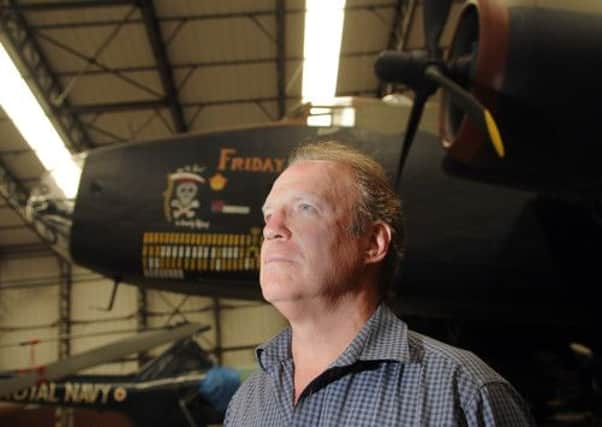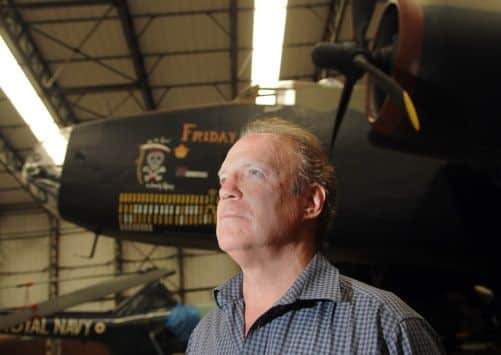Son sees war hero pilot honoured


Amazingly he managed to escape from the burning plane relatively unscathed and after being helped from the wreckage by locals in fields known as Devil’s Glen he was taken by his rescuers to the nearby Saville Arms in Hunsworth, near Cleckheaton, where he was given a stiff drink.
Mr Scotland died last year but his son, John, has travelled to Yorkshire from Australia, where his father lived, to see a memorial unveiled to mark the seventieth anniversary of the events of that remarkable night.
Advertisement
Hide AdAdvertisement
Hide AdAlso among the party was Bill Duncanson, who as a schoolboy, was in a group who saw the plane crash out of the skies and who ran to the pub and peered through the windows to see Mr Scotland.


The fleeting glimpse of the pilot who had helped avert a disaster was to be the last that Mr Duncanson would see of him until 2003, when remarkably the pair discovered by chance that they were both in Australia and living within ten miles of each other in Perth.
“The crash had a huge impact upon my father’s life,” Mr Scotland said.
“Dad described that he wanted to jump out of the plane but after he had told the rest of his crew to bail out and by the time he got ready to bail out he realised he was in a built-up area so he had to jump back into the seat and fly somewhere not as built up – which is what he did,” he added.
Advertisement
Hide AdAdvertisement
Hide AdDuring his visit Mr Scotland also travelled to the Yorkshire Air Museum, at Elvington, near York, where he was given a tour of the museum and was shown a Halifax bomber like the one his father flew.
“My dad primarily flew Halifax bombers. I am getting to see a real Halifax. I have never seen one before.”
He said he was looking forward to clambering aboard the plane and getting a feel for what life was like for his father.
Mr Duncanson was one of four boys who witnessed the crash on Boxing Day 1943. The others were Arthur Hobson, John Jackson and Granville Clarke.
Advertisement
Hide AdAdvertisement
Hide AdIn later years Mr Hobson began a campaign to have Mr Scotland’s bravery remembered, enlisting the help of Spen MP Mike Wood, who asked Spen Valley Civic Society and Drub Village Institute to take on the project for a memorial on Drub village green.
Both Mr Duncanson and Mr Scotland were in Drub to witness the memorial being unveiled.
“It was planned it would be unveiled last year and we were trying to get dad here while he was alive but he was just too ill,” Mr Scotland said.
“This whole time has been remarkable; it’s been a very moving time for me.
“I just cannot describe how much it means to me.”
Advertisement
Hide AdAdvertisement
Hide AdDuring the war the RAF Pathfinder pilot completed 63 missions. Mr Scotland recalls that when his father returned home it was clear he had lived through some difficult times.
“When he came back to Australia he did not sleep well; he had nightmares so we knew that something was wrong.
“When we were young he would talk about this crash because I think it was very significant for him.
“The other thing that he often talked about were his crew and how important they were to him.”
Advertisement
Hide AdAdvertisement
Hide AdAt the memorial unveiling in Drub, the scene of the crash, Mr Duncanson, who struck up a firm friendship with Mr Scotland in later years after he managed to trace him, told those gathered for the ceremony: “When Tom and I would meet in later years it became clear that Tom had a deep affection for this place and these people.
“It was more than a crash for Tom, it was something that really changed his life.
“This memorial stone will weather down until it becomes part of Drub, and kids will come by, jump and play on it and people will read the words on it and see that a Halifax bomber crashed here and will wonder how that happened.”